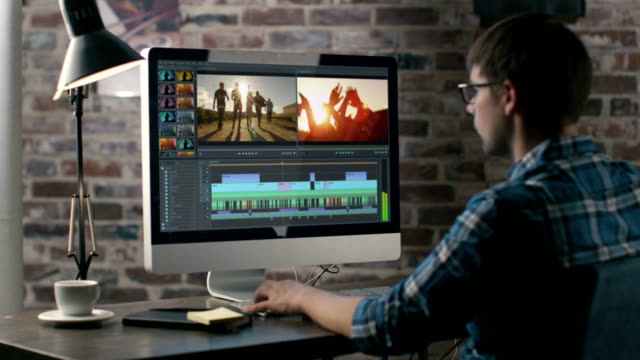
Setting up a home studio for professional video editing requires careful planning and the right equipment. A well-designed workspace enhances your efficiency and the quality of your video projects. Here’s how to create an effective home studio for video editing.
Select an Optimal Location
Firstly, choose a quiet and spacious area for your home studio. Ideally, this space should be away from household distractions and noise. A dedicated room with minimal interruptions allows for focused editing sessions and better concentration. Additionally, ensure the room has good ventilation and is comfortable for extended work periods.
Invest in High-Performance Equipment
Next, invest in high-performance equipment essential for video editing. A powerful computer with a fast processor, ample RAM, and a high-resolution monitor is crucial for handling large video files and software. Consider a secondary monitor to expand your workspace and improve your editing workflow. Quality equipment ensures smooth operation and enhances your editing capabilities.
Set Up Professional Lighting
Moreover, effective lighting is critical for accurate color correction and editing. Use softbox lights or LED panels to create even, diffused lighting that reduces shadows. Position lights around your editing desk to ensure consistent illumination. Proper lighting helps in achieving accurate color grading and a professional-looking final product.
Organize Your Workspace
Additionally, keep your workspace organized to maximize efficiency. Use storage solutions like shelves, drawers, and cable management systems to keep your equipment and accessories in order. An organized studio allows for easy access to tools and materials, minimizing time spent searching for items and reducing clutter.
Incorporate Essential Editing Tools
Furthermore, equip your studio with essential editing tools and accessories. Invest in high-quality headphones for precise audio monitoring and a reliable external hard drive for additional storage. Consider a control surface or editing console for more efficient editing and greater control over your video projects.
Optimize Acoustic Environment
Lastly, optimize the acoustic environment of your studio. Use acoustic panels or foam to reduce echo and improve sound quality. Proper acoustics are important for accurate audio editing and mixing, ensuring that your audio tracks sound professional and clear.
In conclusion, creating a home studio for professional video editing involves selecting an optimal location, investing in high-performance equipment, setting up professional lighting, organizing your workspace, incorporating essential tools, and optimizing the acoustic environment. By following these steps, you’ll establish an efficient and effective workspace that enhances your video editing projects and supports your professional growth.
